Table 1. Device summary
1 Introduction
2 Description
2.1 Device overview
Table 2. STM32F103xx medium-density device features and peripheral counts
Figure 1. STM32F103xx performance line block diagram
Figure 2. Clock tree
2.2 Full compatibility throughout the family
Table 3. STM32F103xx family
2.3 Overview
2.3.1 ARM® Cortex™-M3 core with embedded Flash and SRAM
2.3.2 Embedded Flash memory
2.3.3 CRC (cyclic redundancy check) calculation unit
2.3.4 Embedded SRAM
2.3.5 Nested vectored interrupt controller (NVIC)
2.3.6 External interrupt/event controller (EXTI)
2.3.7 Clocks and startup
2.3.8 Boot modes
2.3.9 Power supply schemes
2.3.10 Power supply supervisor
2.3.11 Voltage regulator
2.3.12 Low-power modes
2.3.13 DMA
2.3.14 RTC (real-time clock) and backup registers
2.3.15 Timers and watchdogs
Table 4. Timer feature comparison
2.3.16 I²C bus
2.3.17 Universal synchronous/asynchronous receiver transmitter (USART)
2.3.18 Serial peripheral interface (SPI)
2.3.19 Controller area network (CAN)
2.3.20 Universal serial bus (USB)
2.3.21 GPIOs (general-purpose inputs/outputs)
2.3.22 ADC (analog-to-digital converter)
2.3.23 Temperature sensor
2.3.24 Serial wire JTAG debug port (SWJ-DP)
3 Pinouts and pin description
Figure 3. STM32F103xx performance line LFBGA100 ballout
Figure 4. STM32F103xx performance line LQFP100 pinout
Figure 5. STM32F103xx performance line UFBGA100 pinout
Figure 6. STM32F103xx performance line LQFP64 pinout
Figure 7. STM32F103xx performance line TFBGA64 ballout
Figure 8. STM32F103xx performance line LQFP48 pinout
Figure 9. STM32F103xx performance line UFQFPN48 pinout
Figure 10. STM32F103xx performance line VFQFPN36 pinout
Table 5. Medium-density STM32F103xx pin definitions (continued)
4 Memory mapping
Figure 11. Memory map
5 Electrical characteristics
5.1 Parameter conditions
5.1.1 Minimum and maximum values
5.1.2 Typical values
5.1.3 Typical curves
5.1.4 Loading capacitor
5.1.5 Pin input voltage
Figure 12. Pin loading conditions
Figure 13. Pin input voltage
5.1.6 Power supply scheme
Figure 14. Power supply scheme
5.1.7 Current consumption measurement
Figure 15. Current consumption measurement scheme
5.2 Absolute maximum ratings
Table 6. Voltage characteristics
Table 7. Current characteristics
Table 8. Thermal characteristics
5.3 Operating conditions
5.3.1 General operating conditions
Table 9. General operating conditions (continued)
5.3.2 Operating conditions at power-up / power-down
Table 10. Operating conditions at power-up / power-down
5.3.3 Embedded reset and power control block characteristics
Table 11. Embedded reset and power control block characteristics
5.3.4 Embedded reference voltage
Table 12. Embedded internal reference voltage
5.3.5 Supply current characteristics
Table 13. Maximum current consumption in Run mode, code with data processing running from Flash
Table 14. Maximum current consumption in Run mode, code with data processing running from RAM
Figure 16. Typical current consumption in Run mode versus frequency (at 3.6 V) - code with data processing running from RAM, peripherals enabled
Figure 17. Typical current consumption in Run mode versus frequency (at 3.6 V) - code with data processing running from RAM, peripherals disabled
Table 15. Maximum current consumption in Sleep mode, code running from Flash or RAM
Table 16. Typical and maximum current consumptions in Stop and Standby modes
Figure 18. Typical current consumption on VBAT with RTC on versus temperature at different VBAT values
Figure 19. Typical current consumption in Stop mode with regulator in Run mode versus temperature at VDD = 3.3 V and 3.6 V
Figure 20. Typical current consumption in Stop mode with regulator in Low-power mode versus temperature at VDD = 3.3 V and 3.6 V
Figure 21. Typical current consumption in Standby mode versus temperature at VDD = 3.3 V and 3.6 V
Table 17. Typical current consumption in Run mode, code with data processing running from Flash
Table 18. Typical current consumption in Sleep mode, code running from Flash or RAM
Table 19. Peripheral current consumption
5.3.6 External clock source characteristics
Table 20. High-speed external user clock characteristics
Table 21. Low-speed external user clock characteristics
Figure 22. High-speed external clock source AC timing diagram
Figure 23. Low-speed external clock source AC timing diagram
Table 22. HSE 4-16 MHz oscillator characteristics
Figure 24. Typical application with an 8 MHz crystal
Table 23. LSE oscillator characteristics (fLSE = 32.768 kHz)
Figure 25. Typical application with a 32.768 kHz crystal
5.3.7 Internal clock source characteristics
Table 24. HSI oscillator characteristics
Table 25. LSI oscillator characteristics
Table 26. Low-power mode wakeup timings
5.3.8 PLL characteristics
Table 27. PLL characteristics
5.3.9 Memory characteristics
Table 28. Flash memory characteristics (continued)
Table 29. Flash memory endurance and data retention
5.3.10 EMC characteristics
Table 30. EMS characteristics
Table 31. EMI characteristics
5.3.11 Absolute maximum ratings (electrical sensitivity)
Table 32. ESD absolute maximum ratings
Table 33. Electrical sensitivities
5.3.12 I/O current injection characteristics
Table 34. I/O current injection susceptibility
5.3.13 I/O port characteristics
Table 35. I/O static characteristics
Figure 26. Standard I/O input characteristics - CMOS port
Figure 27. Standard I/O input characteristics - TTL port
Figure 28. 5 V tolerant I/O input characteristics - CMOS port
Figure 29. 5 V tolerant I/O input characteristics - TTL port
Table 36. Output voltage characteristics
Table 37. I/O AC characteristics
Figure 30. I/O AC characteristics definition
5.3.14 NRST pin characteristics
Table 38. NRST pin characteristics
Figure 31. Recommended NRST pin protection
5.3.15 TIM timer characteristics
Table 39. TIMx characteristics
5.3.16 Communications interfaces
Table 40. I2C characteristics
Figure 32. I2C bus AC waveforms and measurement circuit
Table 41. SCL frequency (fPCLK1= 36 MHz.,VDD_I2C = 3.3 V)
Table 42. SPI characteristics
Figure 33. SPI timing diagram - slave mode and CPHA = 0
Figure 34. SPI timing diagram - slave mode and CPHA = 1(1)
Figure 35. SPI timing diagram - master mode(1)
Table 43. USB startup time
Table 44. USB DC electrical characteristics
Figure 36. USB timings: definition of data signal rise and fall time
Table 45. USB: Full-speed electrical characteristics
5.3.17 CAN (controller area network) interface
5.3.18 12-bit ADC characteristics
Table 46. ADC characteristics
Table 47. RAIN max for fADC = 14 MHz
Table 48. ADC accuracy - limited test conditions
Table 49. ADC accuracy
Figure 37. ADC accuracy characteristics
Figure 38. Typical connection diagram using the ADC
Figure 39. Power supply and reference decoupling (VREF+ not connected to VDDA)
Figure 40. Power supply and reference decoupling (VREF+ connected to VDDA)
5.3.19 Temperature sensor characteristics
Table 50. TS characteristics
6 Package characteristics
6.1 Package mechanical data
Figure 41. VFQFPN36 6 x 6 mm, 0.5 mm pitch, package outline(1)
Figure 42. VFQFPN36 recommended footprint (dimensions in mm)(1)(2)
Table 51. VFQFPN36 6 x 6 mm, 0.5 mm pitch, package mechanical data
Figure 43. UFQFPN48 7 x 7 mm, 0.5 mm pitch, package outline
Table 52. UFQFPN48 7 x 7 mm, 0.5 mm pitch, package mechanical data (continued)
Figure 44. UFQFPN48 recommended footprint
Figure 45. LFBGA100 - 10 x 10 mm low profile fine pitch ball grid array package outline
Table 53. LFBGA100 - 10 x 10 mm low profile fine pitch ball grid array package mechanical data
Figure 46. Recommended PCB design rules (0.80/0.75 mm pitch BGA)
Figure 47. LQFP100, 14 x 14 mm 100-pin low-profile quad flat package outline
Figure 48. LQFP100 recommended footprint(1)
Table 54. LQPF100, 14 x 14 mm 100-pin low-profile quad flat package mechanical data
Figure 49. UFBGA100 - ultra fine pitch ball grid array, 7 x 7 mm, 0.50 mm pitch, package outline
Table 55. UFBGA100 - ultra fine pitch ball grid array, 7 x 7 mm, 0.50 mm pitch, package mechanical data
Figure 50. LQFP64, 10 x 10 mm, 64-pin low-profile quad flat package outline
Figure 51. LQFP64 recommended footprint(1)
Table 56. LQFP64, 10 x 10 mm, 64-pin low-profile quad flat package mechanical data
Figure 52. TFBGA64 - 8 x 8 active ball array, 5 x 5 mm, 0.5 mm pitch, package outline
Table 57. TFBGA64 - 8 x 8 active ball array, 5 x 5 mm, 0.5 mm pitch, package mechanical data
Figure 53. Recommended PCB design rules for pads (0.5 mm pitch BGA)
Figure 54. LQFP48, 7 x 7 mm, 48-pin low-profile quad flat package outline
Figure 55. LQFP48 recommended footprint(1)
Table 58. LQFP48, 7 x 7 mm, 48-pin low-profile quad flat package mechanical data
6.2 Thermal characteristics
Table 59. Package thermal characteristics
6.2.1 Reference document
6.2.2 Selecting the product temperature range
Figure 56. LQFP100 PD max vs. TA
7 Ordering information scheme
Table 60. Ordering information scheme
8 Revision history
Table 61. Document revision history (continued)
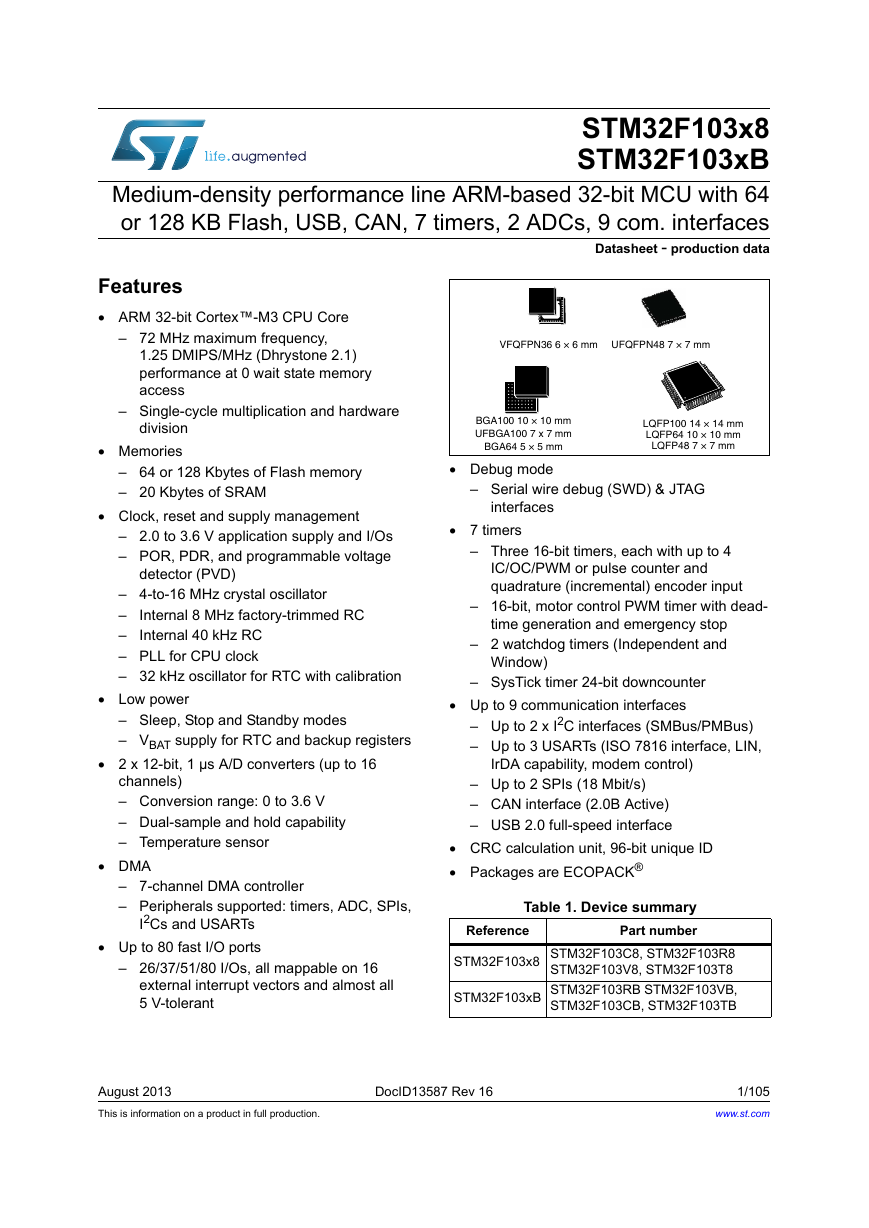
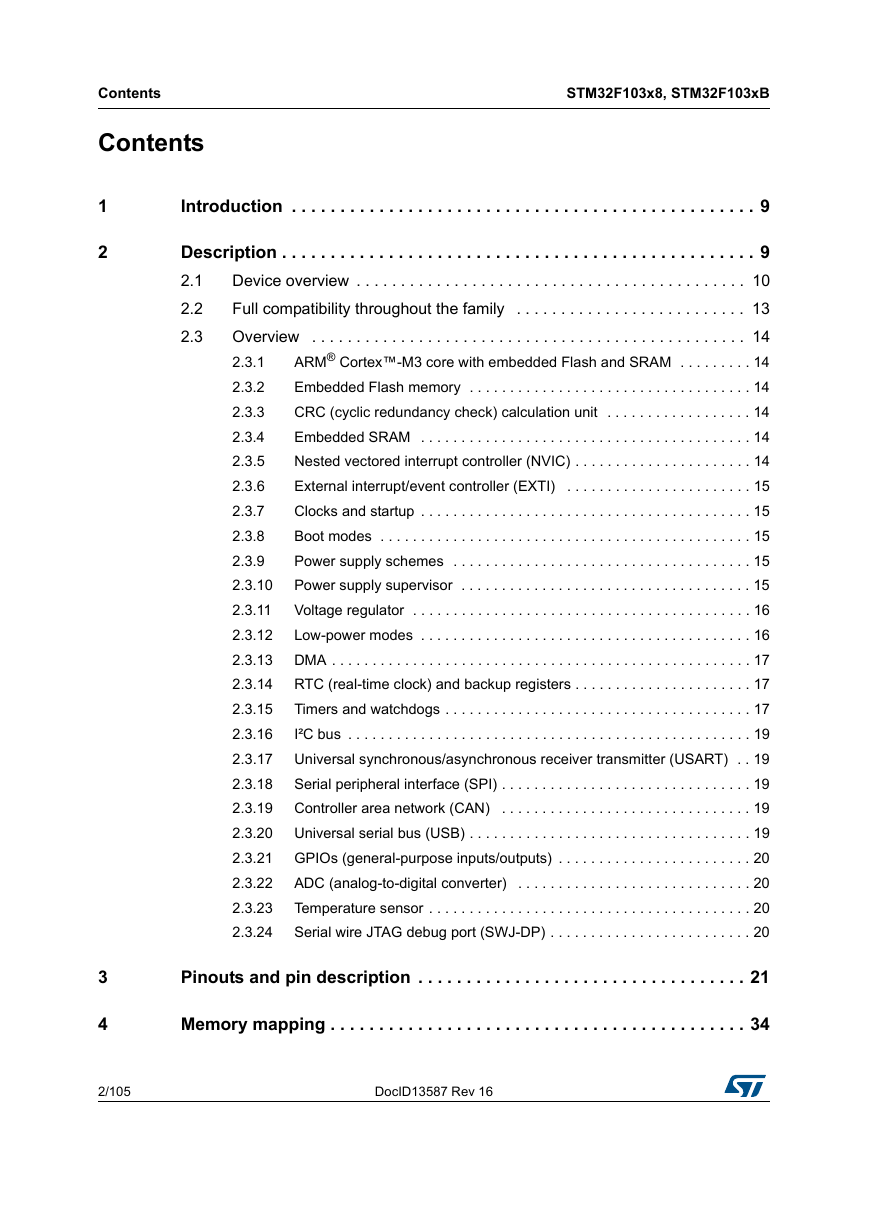
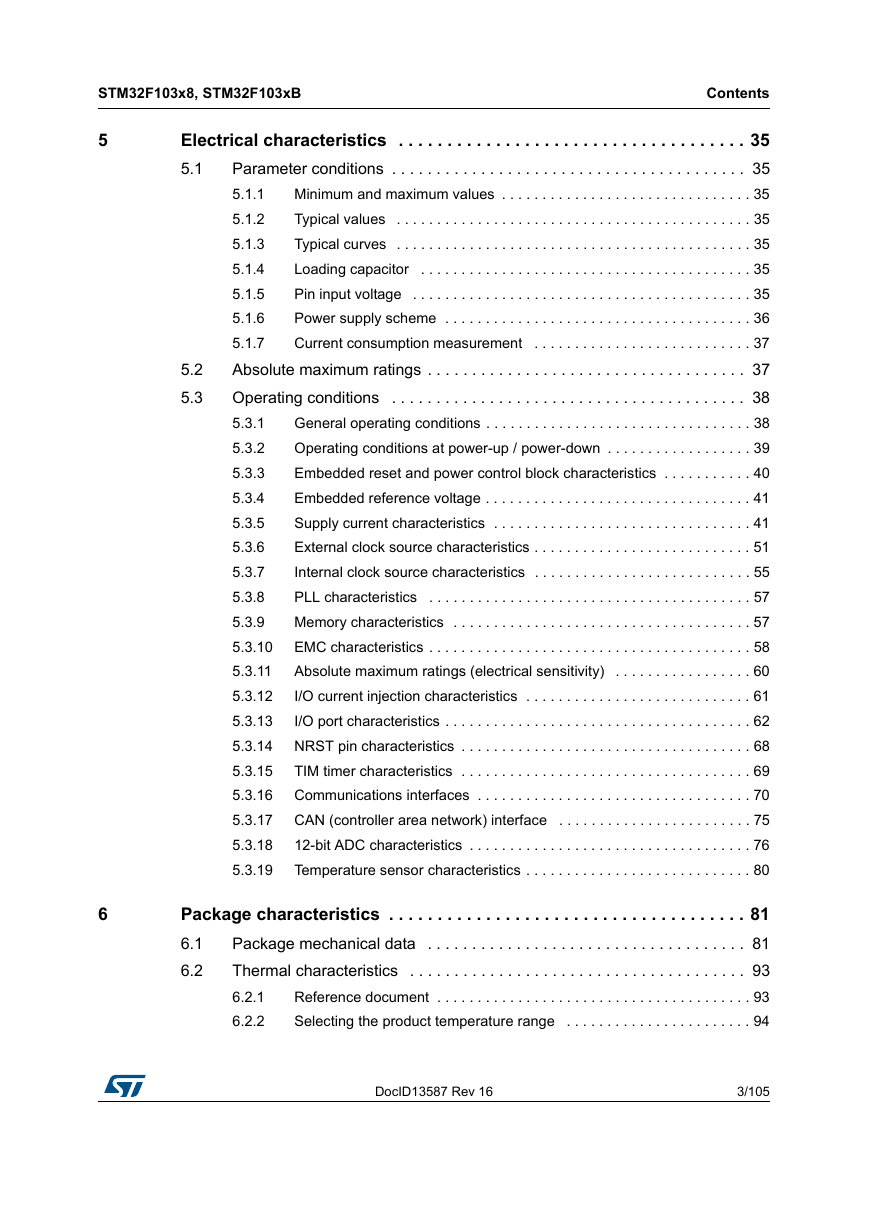
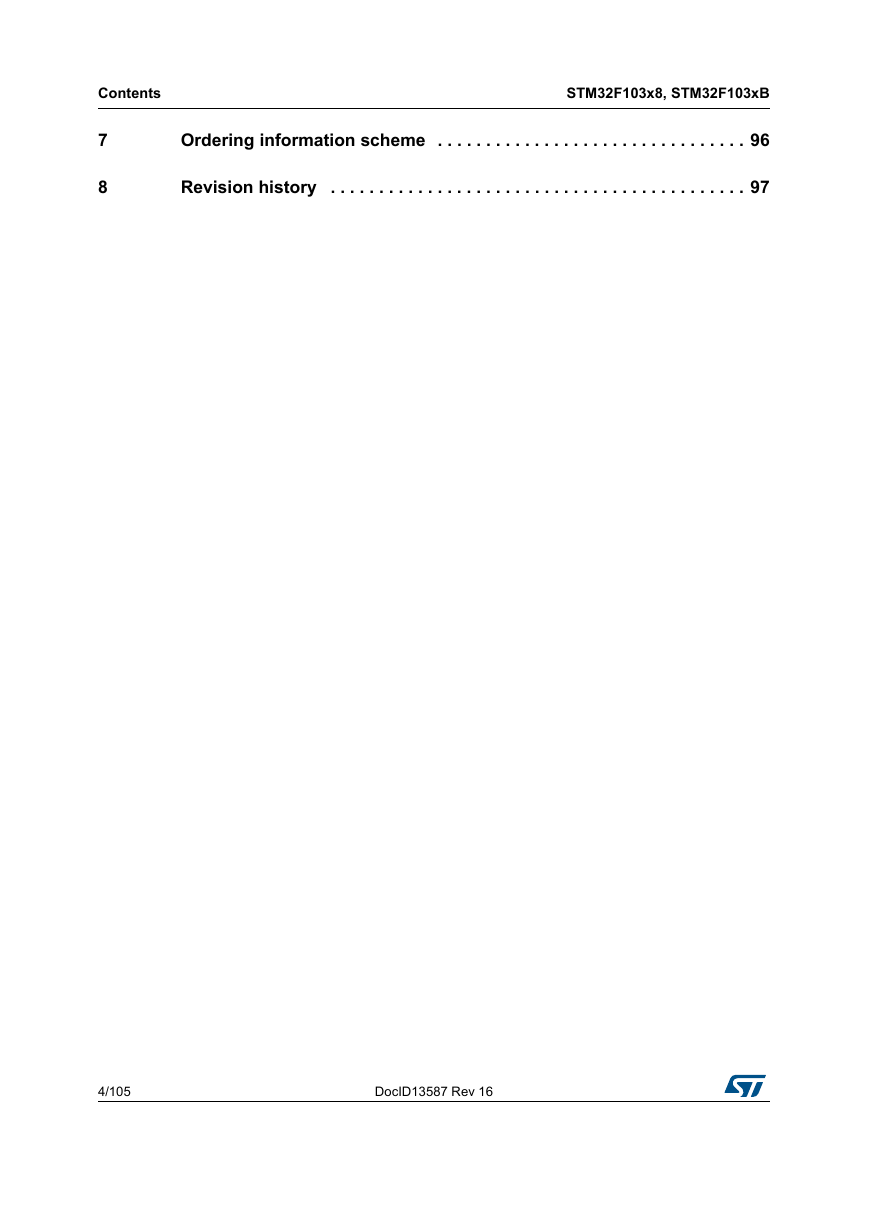
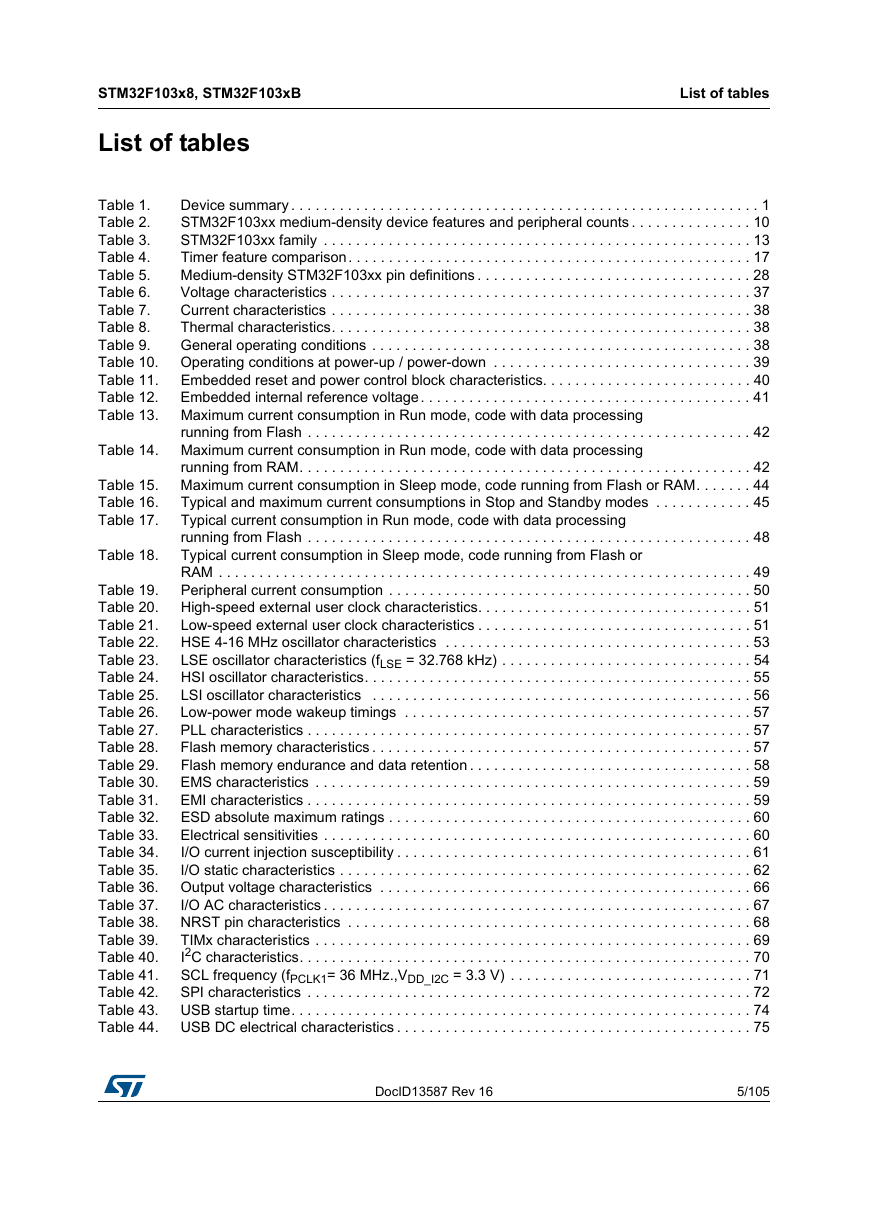
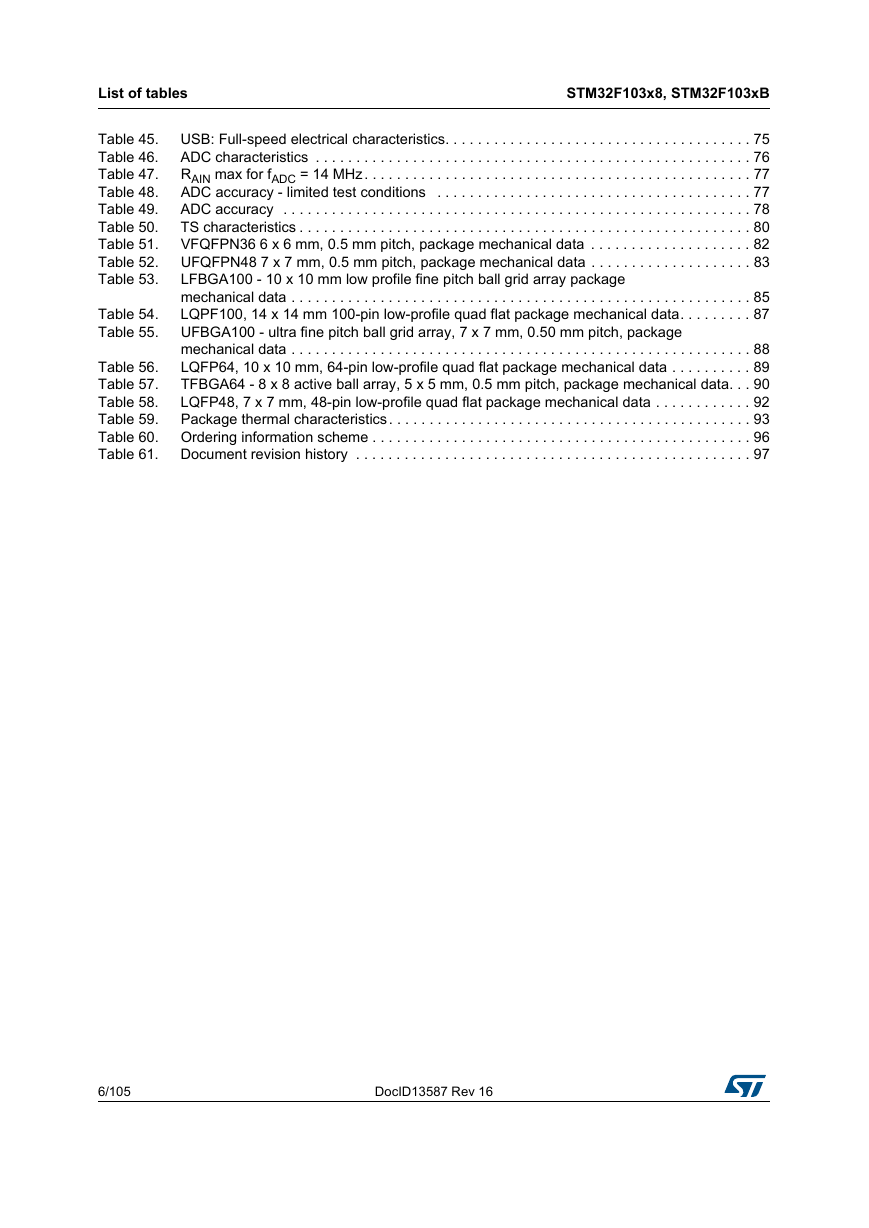

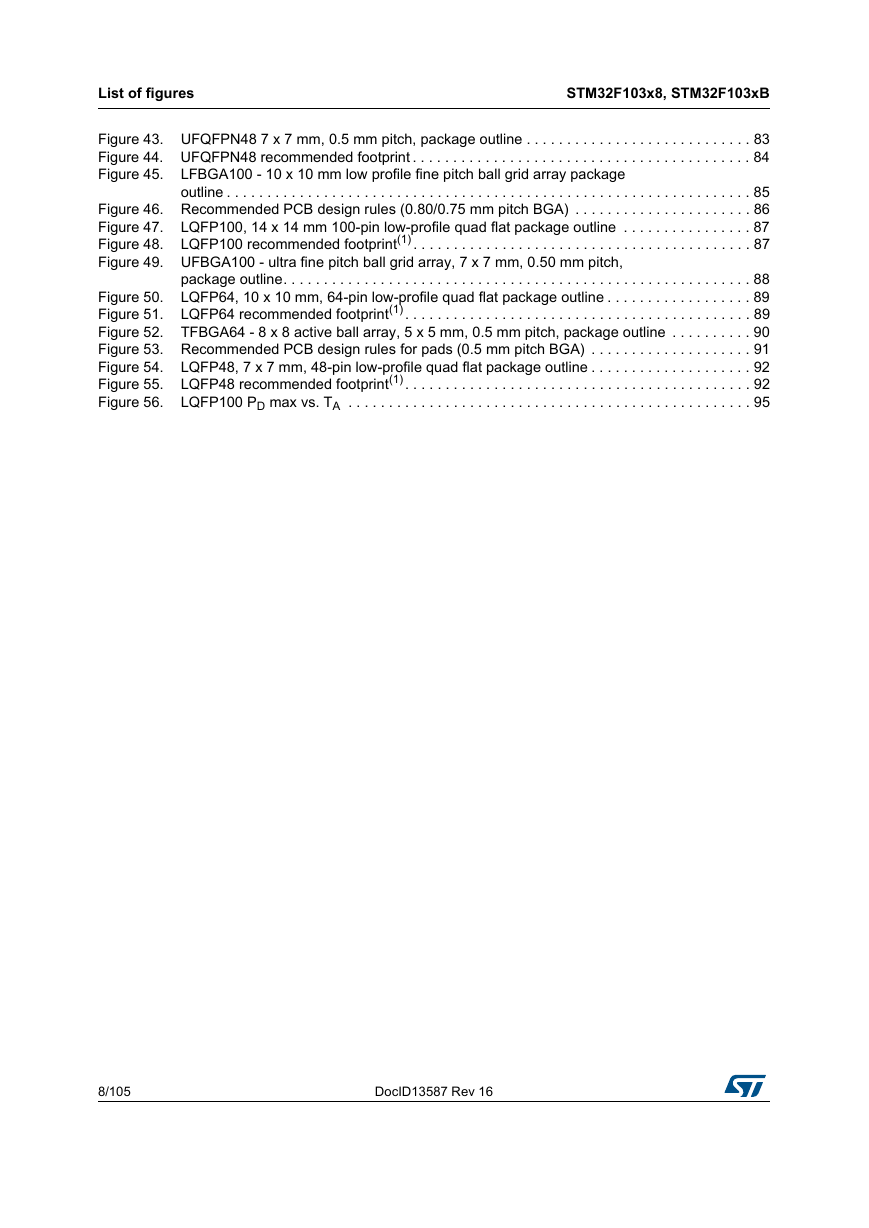








 2023年江西萍乡中考道德与法治真题及答案.doc
2023年江西萍乡中考道德与法治真题及答案.doc 2012年重庆南川中考生物真题及答案.doc
2012年重庆南川中考生物真题及答案.doc 2013年江西师范大学地理学综合及文艺理论基础考研真题.doc
2013年江西师范大学地理学综合及文艺理论基础考研真题.doc 2020年四川甘孜小升初语文真题及答案I卷.doc
2020年四川甘孜小升初语文真题及答案I卷.doc 2020年注册岩土工程师专业基础考试真题及答案.doc
2020年注册岩土工程师专业基础考试真题及答案.doc 2023-2024学年福建省厦门市九年级上学期数学月考试题及答案.doc
2023-2024学年福建省厦门市九年级上学期数学月考试题及答案.doc 2021-2022学年辽宁省沈阳市大东区九年级上学期语文期末试题及答案.doc
2021-2022学年辽宁省沈阳市大东区九年级上学期语文期末试题及答案.doc 2022-2023学年北京东城区初三第一学期物理期末试卷及答案.doc
2022-2023学年北京东城区初三第一学期物理期末试卷及答案.doc 2018上半年江西教师资格初中地理学科知识与教学能力真题及答案.doc
2018上半年江西教师资格初中地理学科知识与教学能力真题及答案.doc 2012年河北国家公务员申论考试真题及答案-省级.doc
2012年河北国家公务员申论考试真题及答案-省级.doc 2020-2021学年江苏省扬州市江都区邵樊片九年级上学期数学第一次质量检测试题及答案.doc
2020-2021学年江苏省扬州市江都区邵樊片九年级上学期数学第一次质量检测试题及答案.doc 2022下半年黑龙江教师资格证中学综合素质真题及答案.doc
2022下半年黑龙江教师资格证中学综合素质真题及答案.doc